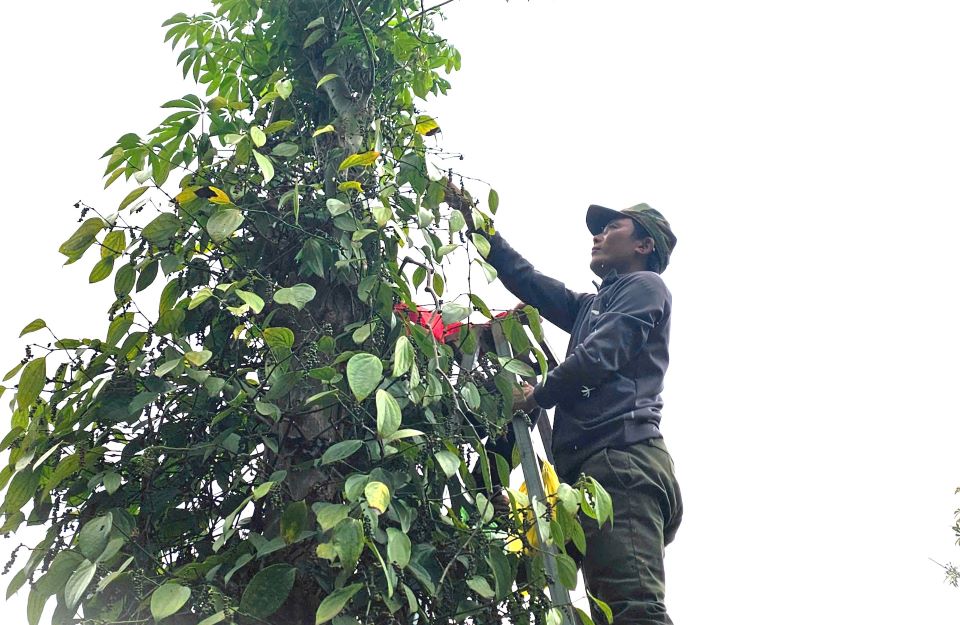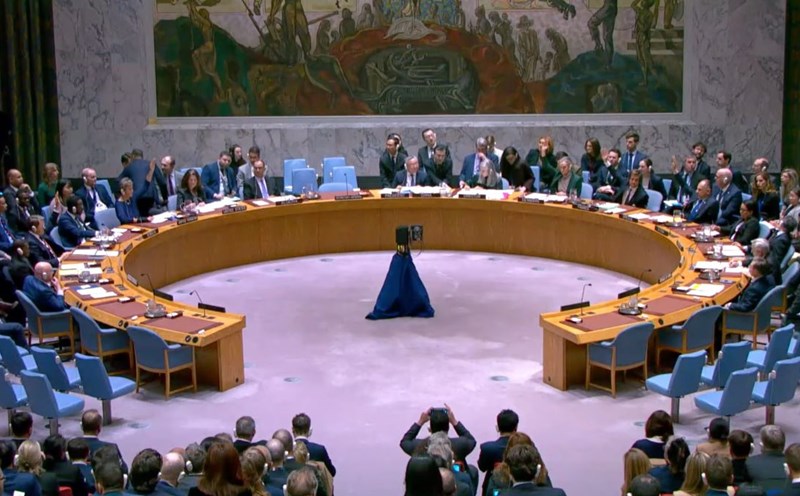Pepper prices are increasing at their highest level in many years. Currently, Dak Lak farmers have entered the pepper harvest season with a happy and excited mood.
In reality, although unfavorable weather has led to a decrease in productivity, pepper prices are continuously increasing and anchored at a high level.
Up to this point (February 25), pepper prices in Dak Lak are at 161,000 VND/kg.This price is nearly double the 2024 crop.This is also the highest price in nearly 10 years (since 2016).
The high price of pepper has brought significant profits to growers.Many households have proactively hired workers and prepared carefully for the harvest to ensure progress and quality.

Mr. Vu Hoi Sieu (village 6, Ea Na commune, Krong Ana district, Dak Lak) shared that his family is harvesting pepper in an excited mood.
According to Mr. Sieu, this year the pepper trees are not allowed to bear fruit due to the impact of drought in the dry season of 2024. However, in return, the price of pepper is being purchased nearly double last year.
In particular, at the beginning of last year's crop, the price ranged from 75,000-85,000 VND/kg. Now, pepper is priced at over 160,000 VND/kg.
Ms. H'Ning Eban (Ea Kao commune, Buon Ma Thuot city, Dak Lak) said that her family has nearly 1ha of pepper in the harvest season. She estimates that this crop will yield about 1.5 tons of nuts.
With the current selling price, Ms. H'Ning's family earned over 240 million VND. After deducting labor costs, fertilizers, etc., the family will earn nearly 200 million VND in profit.
Rising pepper prices not only bring high incomes to farmers but also create motivation for them to invest and take better care of pepper gardens.
According to statistics, the whole Dak Lak province currently has over 32,800 hectares of pepper, accounting for about 40% of the area and 43.3% of the total output of the Central Highlands.
However, from 2018 to now, pepper acreage has decreased by about 5,000 hectares due to fluctuations in prices and the impact of epidemics.
The sharp increase in pepper prices in recent times has been a driving force for the pepper industry to rebuild.











